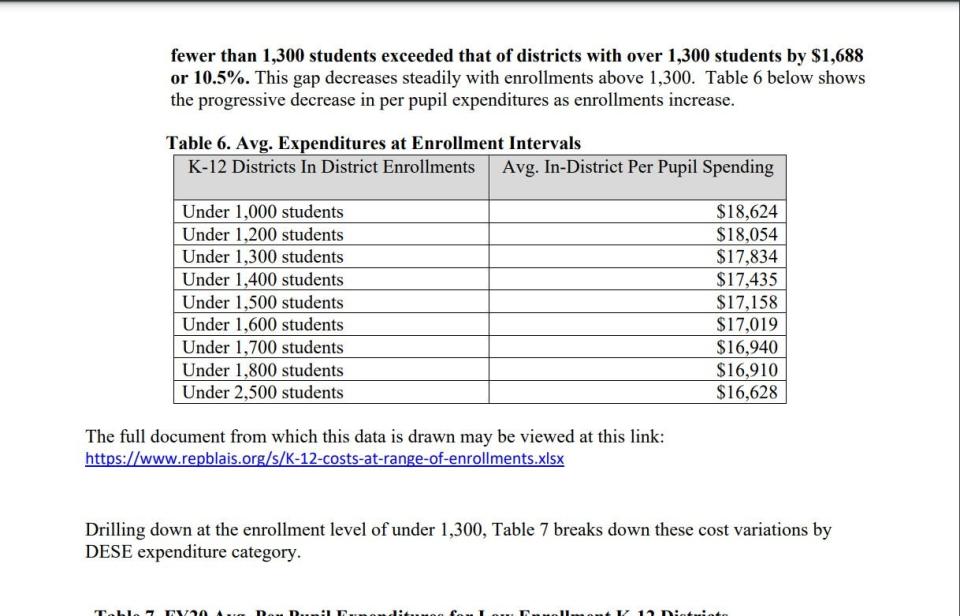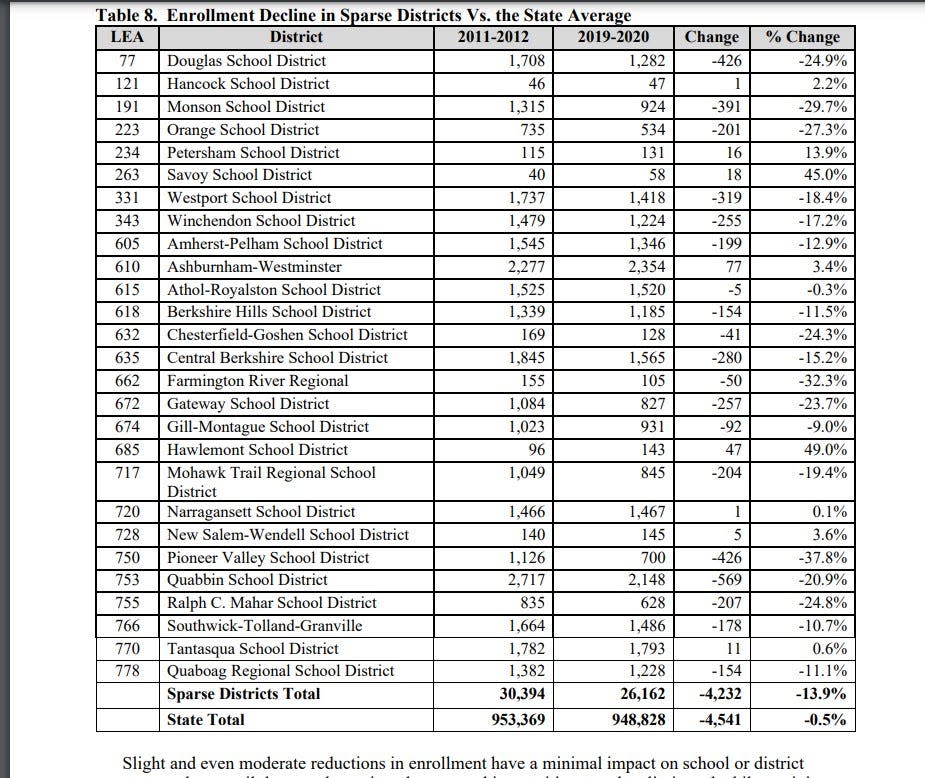Rural lawmakers back Mass. school funding bill to increase money for rural schools

Massachusetts has studied the problem repeatedly, issuing reports and making recommendations. Now legislators have filed two bills to guarantee rural schools a stable source of funding while also benefiting all school districts regardless of location.
The problem: Declining student enrollment in the state’s rural districts.
The proposed solution: Add $60 million to the budget annually to fund rural districts.
In addition to ensuring a stable funding source, the bills would:
Shore up state reimbursements for transportation.
Reimburse special education costs at 100% in the year they are incurred.
Offer technical aid in reorganizing and consolidating districts.
Find cost-sharing measures for communities.
Create a specialized state office to oversee and assist with regionalization.
Create new incentives for paraprofessionals to seek licensure as special educators.
Seek out less costly health insurance benefits for retirees.
Filed by Rep. Natalie Blais, D-Deerfield, and Sen. Jo Comerford, D-Northampton, the two bills would address the fiscal health of rural districts. The bills are based on the findings of three reports: the Commission on the Long Term Health of Rural Schools report, "A Sustainable Future for Rural Schools," released last summer; a 2017 auditor’s report, "Supporting Student and Community Success; Updating the Structure and Finance of Massachusetts Regional School Districts"; and a 2018 report issued by the Department of Elementary and Secondary Education, "Fiscal Conditions in Rural School Districts."

“We need to have a sustainable future for rural schools,” Blais said at a virtual hearing Thursday highlighting her legislation.
Some 37 states throughout the U.S. have responded to the fiscal challenges faced by rural schools by increasing aid to schools.
“In Franklin County, there has been a drop of 21% enrollment between 2010 and 2019,” said Linda Dunlavy of the Franklin Regional Council of Governments. “We’ve closed some classes, combined others, but we still need teachers, still need to pay legacy costs.”

Drop in enrollment, not in cost
The drop in enrollment, Dunlavy said, does not translate to a similar drop in the cost of running the district. Even massive cuts to programming and staff, according to the auditor's report, cannot fully make up the cost of running the schools and alleviate the tax bite put on residential property owners.
The report found that the smaller the student body, the higher the cost of running a school district. Those with fewer than 1,300 enrolled students cost 16% more to run than average in Massachusetts, on a per-pupil basis.
Several factors contribute to the problem of declining enrollments, including aging population, as well as a lack of a commercial and industrial tax base. Lower base salaries and high transportation costs also contribute, as does the option for school choice. Many parents choose to enroll their children in private or charter schools that offer more educational and extracurricular activities, in schools located closer to where parents work, or even schools that are closer to home base and don’t require youngsters to be on a bus for hours a day.
Currently some 68 districts in Massachusetts qualify as rural, with many located in Berkshire, Barnstable and Franklin counties. In the past the rural funding formula, some $4 million in the state budget, afforded each district $59,701, which is not even enough to fund a teacher’s salary and benefits, according to the 2018 DESE study.
In the past, DESE designation as rural has fluctuated from 54 to 47 to 68 districts, depending on the definition used. The most recent definition is a district that has fewer than 21 students living per square mile.
The bulk of the 2019 Student Opportunity Act, or Chapter 70 funding, goes to those districts with a large number of low-income students, those with large numbers of English-language learners and districts with children with special needs, according to the 2022 report.

Taunton Superintendent John Cabral recognized that the Chapter 70 funding has enabled widespread change in his gateway city district. The increase from $53 million in fiscal 2016 to $89 million in fiscal 2023 has made a huge difference.
“Poverty,” he said, “does not choose an address; it exists in rural and urban areas. The extraordinary needs of students must be addressed.”
Education is the only way to break the cycle of poverty, and the state funding has allowed his district to hire more support personnel and create more pathways to college, certification programs and jobs.
Inequities to the fore
With school funding overall based on property tax revenue, the inequities come to the fore.
In Franklin County, 460,000 acres are state land that does not generate real estate tax revenue for local communities. Real estate tax rates are some of the highest in Massachusetts, some at $20 per $1,000 of valuation. School bills can account for 60% to 70% of municipal budgets.
“We need these bills to benefit all of Massachusetts schools,” Dunlavy said.
Over the past decade, Berkshire, Franklin and Barnstable counties have seen a decline in student population between 15% and 20%. Most of the declining enrollment in the state is seen in the most rural areas. Massachusetts student population currently enrolled in public schools sits at 913,735.
At the virtual hearing, Lisa Battaglino, dean emeritus of the College of Education and Health Sciences at Bridgewater State University, described the recommendations as “equitable, sustainable and impactful“ in its support of rural districts.
“Yes, it supports rural districts, but it also impacts all school districts in Massachusetts,” Battaglino said. “Students in rural districts cannot access the same level of resources as their peers in the rest of the state. Rural students are getting less than they need and deserve.”
The bill, she believes, will ensure educational equity for all Massachusetts scholars, regardless of their ZIP codes.
“What is good practice for one is good practice for all,” Battaglino said. “What is good for rural Massachusetts is good for all of Massachusetts.”
This article originally appeared on Telegram & Gazette: Rural schools are flailing, lawmakers urge: add $60 million to budget

